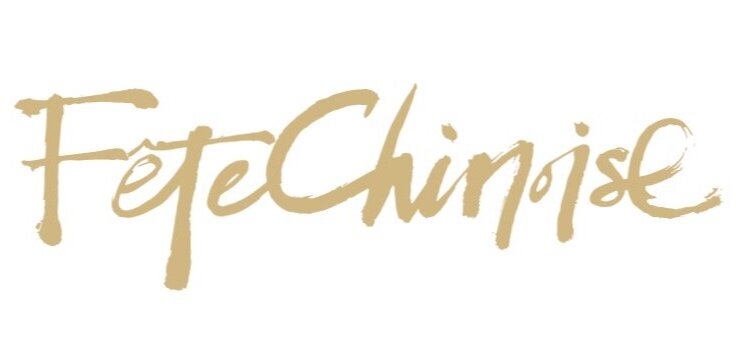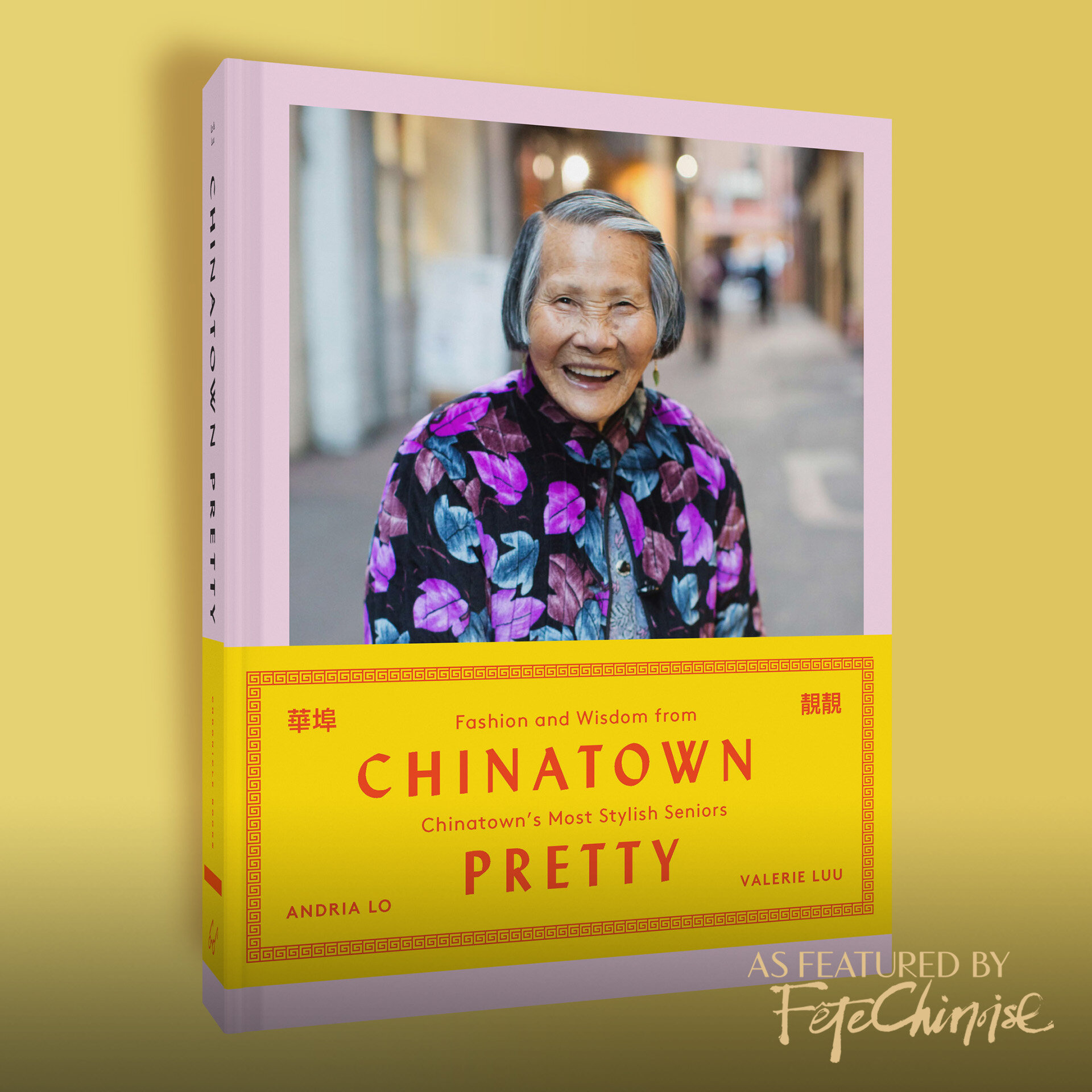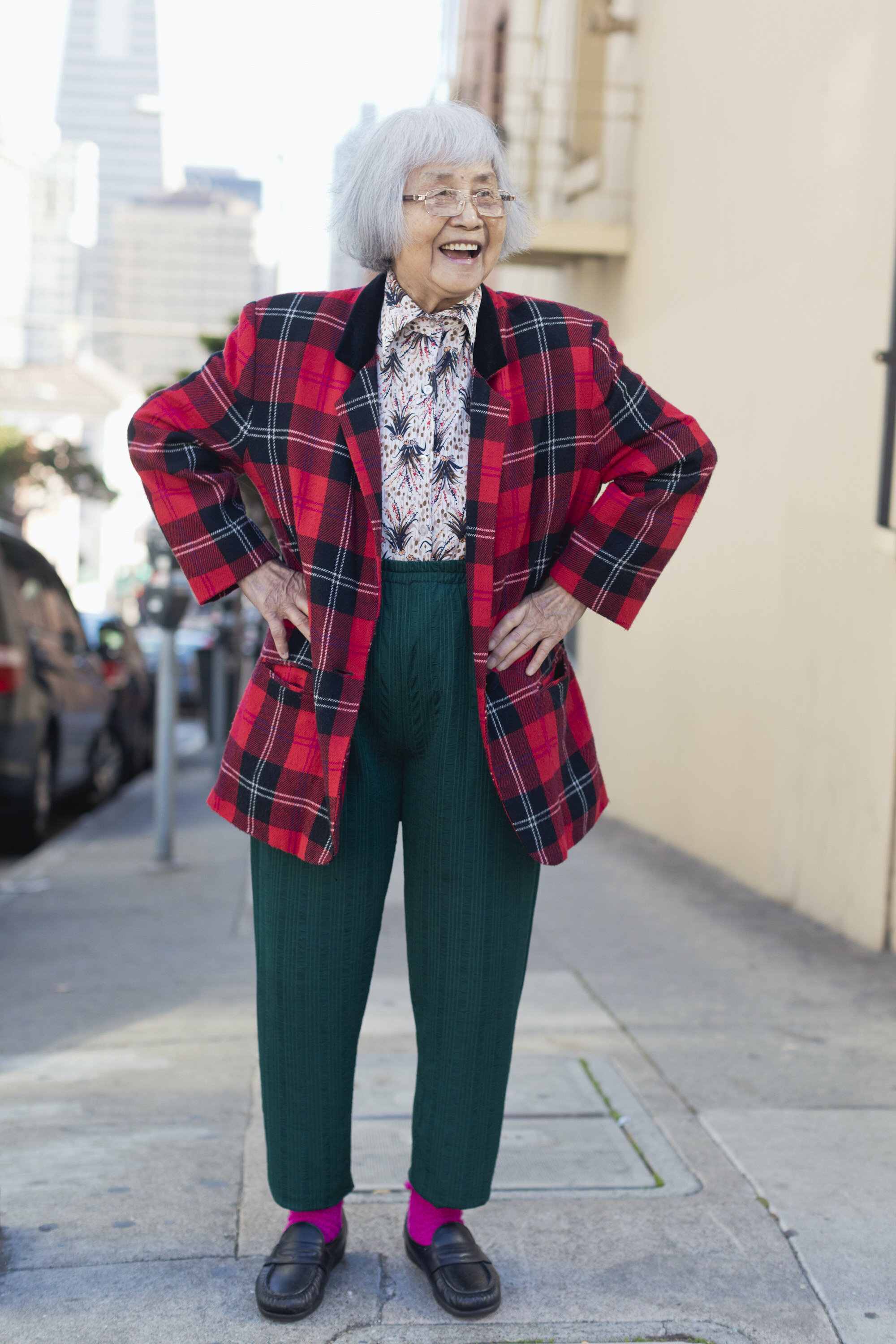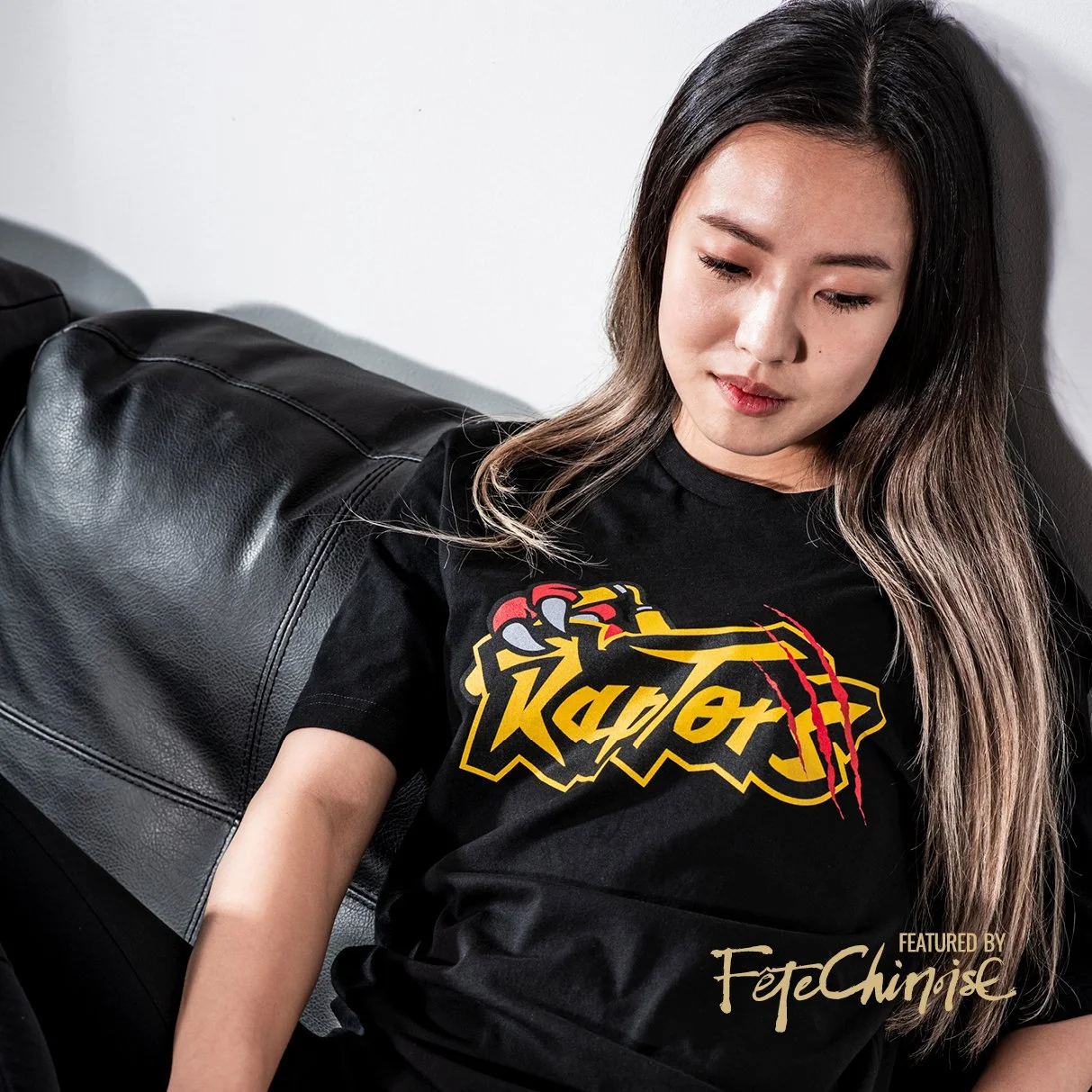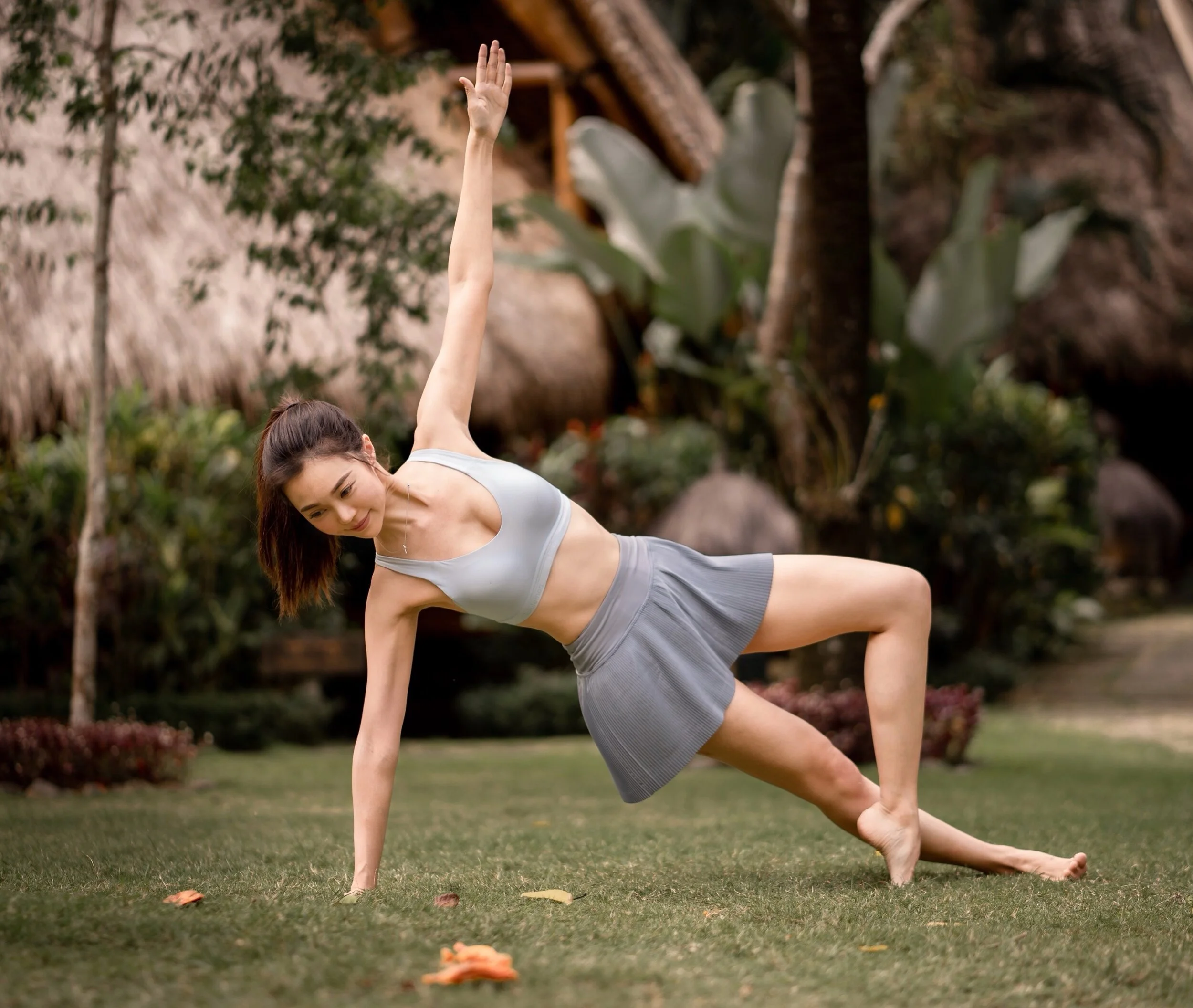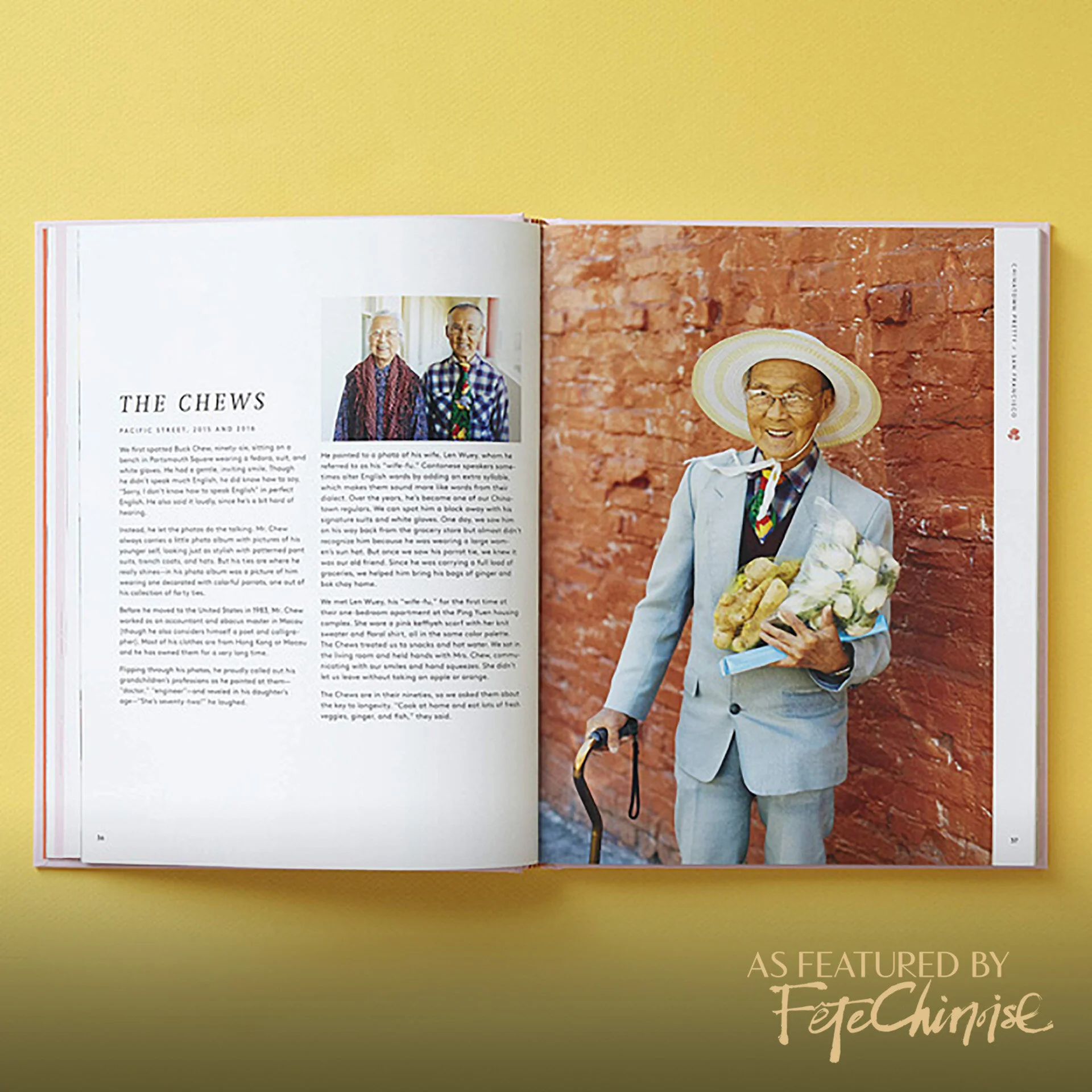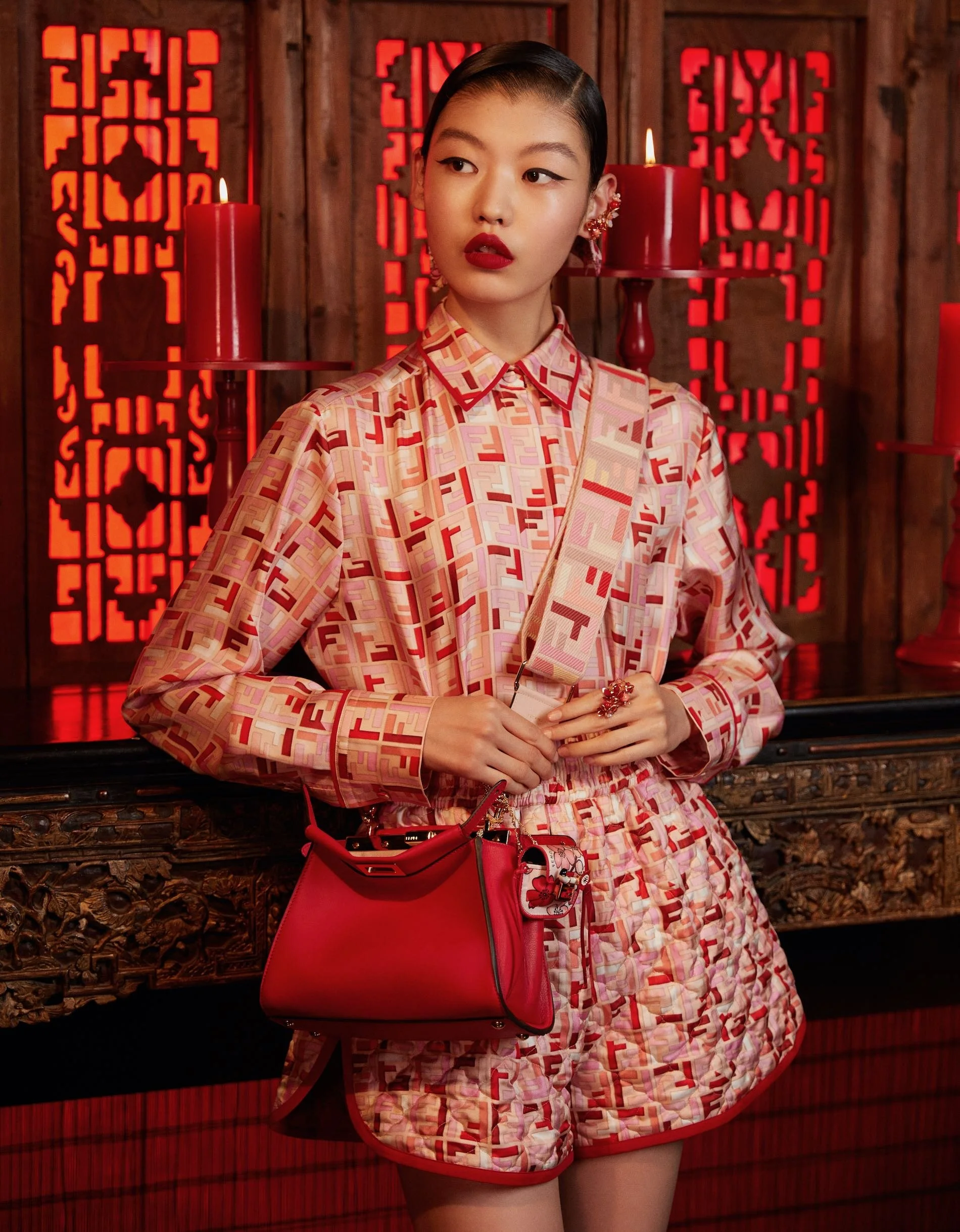A Signature Style Called ‘Chinatown Pretty’
Interviewed & Written by Cindy Tu
Edited by Deborah Lau-Yu
Photographs courtesy of Chinatown Pretty
BOOK Cover of ChinaTOWN PRETTY. Photo credit CHINATOWN PRETTY.
AUTHORS ANDRIA LO & VALERIE LUU. Photo credit CHINATOWN PRETTY.
Authors Andria Lo & Valerie Luu of Chinatown Pretty walked us through their journey chasing after pòh pohs (grandmas) and gùng gungs (grandpas) that have pretty shoes or standout hats that fill the Chinatown streets across North America. This documentary book collects hundreds of portraits and personal stories featuring beautiful seniors that roam the Chinatown streets – where each elder had kindly shared their sense of street fashion and life's philosophy. It is a keepsake that celebrates the culture in these communities and the people who live in them. As they continued sparking conversations and capturing photographs, they quickly realized that the elderlies' street fashion became the gateway to learn about fascinating immigration stories, Chinese culture & Chinatown history of North America.
Fast forward five months after publishing their book in Autumn of 2020, social media platforms and news outlets have been on fire with troubling footage of violence and hate towards Asians, triggering anger, sadness and disappointment at large. In today's unfortunate climax of anti-Asian hate crimes, the book's significance has undoubtedly shifted and increased, resonating with a larger audience, especially in the last several weeks – where many cases were unprovoked, and victims were vulnerable elderly Asians. In light of these events, and the need for more individuals to speak up against racism, it is important to note that a part of standing up for your own culture is to be an active part of it, to engage in the events, products, literature and discussions, and to be a representation. Therefore, we hope this interview with the authors interests you, and inspires you to purchase a copy of this book for your personal libraries, or to gift to a friend who might have a special connection to a Chinatown in their family story.
SPONSORED BY THE HONG KONG ECONOMIC TRADE OFFICE OF TORONTO
ON FASHION
To start, Valerie & Andria's exploration of Chinatowns across North America included San Francisco, Oakland, Los Angeles, Chicago, Manhattan, and Vancouver. They quickly noted the different cordiality and architectural storefronts across each community. However, the one consistent similarity was the pòh pohs and gùng gungs eclectic street fashion and signature style that Valerie & Andria coined as – Chinatown Pretty. They describe this style as a "delightful mix of modern and vintage, high and low, bold patterns and colours, and contemporary streetwear" with "personal tender details" of hand-stitching or using found pieces like ribbon.
Valerie noticed that elderly Asian personas are often shy, but their style signals a deeper story with the louder prints and vibrant colours. As they discover the different layers of these said outfits through one-on-one conversations, each piece often has a personal sentiment. For example, one may mix an item they purchased from Hong Kong 30 years ago and another clothing piece that their grandchildren gifted.
Elderlies have this ‘unthinking’ method to their fashion; their choices are highly dependent on comfort, form, and function. To complete an outfit though, adding a piece that brings them great memories or feelings is essential. It is not necessarily what is trendy but what makes them happy – after all, isn’t that main compass of fashion?
Photo credit CHINATOWN PRETTY.
“... the pòh pohs and gùng gungs [have this] eclectic street fashion and signature style that Valerie & Andria coined as – Chinatown Pretty. They describe this style as a “delightful mix of modern and vintage, high and low, bold patterns and colours, and contemporary streetwear” with “personal tender details” using found pieces like ribbon or handstitches.”
BarrierS between generations
Photo credit CHINATOWN PRETTY.
Reputably, there is this invisible barrier between generations: the young and the old. This exists even for different generations of the same heritage and native tongue. When Valerie & Andria missioned to find seniors willing to be documented and share their stylish ways, this was no different. Naturally, this makes it challenging to understand and relate to seniors when they steer away from conversations, especially with strangers.
However, one conversation stood out for Valerie where a gùng gung they met in Manhattan's Columbus Park that "expressed frustration that younger people seldom talk to seniors and was happy that [Valerie & Andria] took the time to chat with him. He left [them] a proverb to simmer on: "The sunset is infinitely beautiful, but it signals the end of the day," he said. "One day you'll be old as well."" We may interrupt this quote in many ways, but in reading this, there is this overarching feeling that the young and elderly are more alike than we perceive.
Photo credit CHINATOWN PRETTY.
And so, in a time when elders are the most vulnerable, Andria shared her two cents that if we put effort into learning the stories of these elderly Asians, it can help bridge a better understanding of them. As timely quoted by Chloe Zhao, winner of the Best Director of a Motion Picture at the Golden Globe Awards 2020, "compassion is the breakdown of all barriers between us. A heart-to-heart bonding. Your pain is my pain. It's mingled and shared between us" and by "[taking the time to] learn from each other we would have more compassion for each other." If having conversations with the aged proves difficult to spark, Valerie & Andria did the hard work for readers and have penned hundreds of personal stories covering these Chinatown beauties – have a read to form compassion to breakdown these barriers in the community.
“... elderlies are often just a blur in the background of tourist images. In fact, the Asian elderly are real people with beautiful souls and are an important fabric of the community. ”
Photo credit CHINATOWN PRETTY.
COMBATTING RACISM
The rhythm of the Chinatown streets and landscape has surely changed since the pandemic. It is observed to be one of the hardest-hit communities, with closures being the highest. More than ever, it is crucial to support and protect the Chinatown communities. Echoing Valerie & Andria, we can all help by merely being present in Chinatowns and supporting local businesses. We may not realize it, but our presents alone generate a sense of safety for the elderly who rely on these communities to purchase their necessities. By shopping at the local businesses, ordering takeout at the restaurants, or donating to local Chinatown organizations whose mission is to make Chinatowns a safe and livable place keeps these neighbourhoods constant.
As Andria & Valerie best said it, elderlies are often just a blur in the background of tourist images. In fact, the Asian elderly are real people with beautiful souls and are an important fabric of the community. By capturing the humanity of the neighbourhood in Chinatown Pretty, it was a tribute to show how strong the seniors make up the community—the photos and stories in this book document this humankind. And so, encourage your friends and family to visit your local Chinatown. There is a greater sense of urgency right now, and taking the time to understand the elderly Asians and showing love to all Chinatowns is what it exactly needs.
Photo Credit Chinatown Pretty.
To highlight, here are a couple of charities & organizations Chinatown Pretty has been supporting. For more information, please visit:
Vancouver, BC, Canada Youth Collaborative for Chinatown
San Francisco, CA, USA Chinatown Community Development Center
